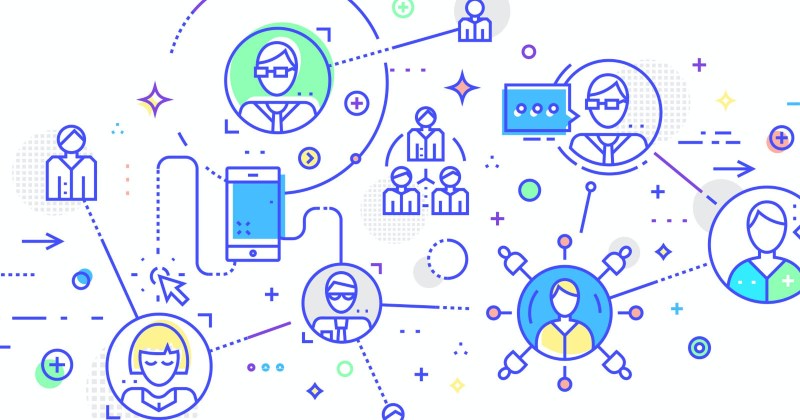As a business owner or marketing head, you already understand the value of customer data. Today, advances in technologies have made it possible to access, store and analyze humongous volumes of it.
Approximately 2.5 quintillion bytes of data are generated daily, according to reports by industry watchers and this figure is poised to only climb higher.
Never in human history has so much information on your customers been available. Whatever the size, nature and extent of your business, and regardless of the product or service you sell, data has become the Open Sesame to success.
There’s no getting away from the fact that a detailed, up-to-the-minute, accurate record of your customer-base is a crucial part of the health, growth and sustainability of a business.
Reliable and recent the data about who your customers are, where they’re located, how, why and when they purchase and interact with your company/brand goes a long way in improving the chances of success.
One of the critical aspects of business strategy today is customer data management. This helps to determine whether you’re actually leveraging the superpowers of this resource, and efficiently analyzing and contextualizing it.
Data is important because of its innate ability to “put a face to the name”, and to form sturdy, lasting bonds with customers. Customer loyalty is a prized possession for any business, because it costs five times more to acquire a new customer than to retain an existing one.
Customers also value personalized communication and interactions with businesses and brand. They seek better customer experiences, whether they are your B2C or B2B customers.
What Kinds Of Data Are Collected?
Customer data is essentially all and any information that customers provide as they connect and interact with your business and your brand.
It may be in the form of demographic or behavioral information, financial and social media interaction and more. They can share in via various modes such as mobile apps, your website, surveys and feedback, reviews, social media and also conventional routes such as email.
The different kinds of data include:
1. Personal Data: This type of information helps business to understand the identity of the customer. It includes the name, gender, age, date of birth, address, telephone number, email id, social security number, drivers license number, passport number, job designation and company name, bank account details, and information about family members. Today the phenomenon of the “digital self” is also available through IP addresses, cookies and device id. However, it’s important to respect the privacy of customers and many of them may not wish to share all these facts with you.
2. Engagement or Interaction Data: As customers connects and interacts with your brand/business, they provide valuable insights into purchasing behavior, preferences, pricing bands, social media presence and more. You can derive this information from backlinks, social shares, clicks, page-views, downloads and queries.
3. Behavioral Data: This is an emerging area of interest in data analytics. It offers a reflection of how your business impacts the customer. You can evaluate customer response through observing the features they use, how they use them, time and dates, login patterns, abandonment of shopping carts or termination of journey, churn, upgrades and heat-maps. This type of data is currently the hottest on the market and offers amazing insights into product performance, value and loyalty.
4. Other Types: You can also collect data on customer satisfaction, grievances and complaints, motivation, challenges, feedback, repeat orders, and criteria for purchasing.
How To Decide What Data To Collect
While this decision rests largely on the size, nature and growth trajectory of your business and your marketing goals and aspirations, certain types of data help to identify bottlenecks, pain points and also great features more quickly.
1. Contact information: This is one of the fundamental types of data that you should collect. It has always remained important, since the very earliest days of commerce. A very big chunk of business comes from loyal and repeat customers. Knowing where and how to find them helps you reach out to them whenever it’s necessary. Ensure that you don’t use pressure tactics to get them to part with this information, or it could be counter-productive. It’s critical to keep track of their physical address to avoid delivery goof-ups.
2. Purchase Decision Hierarchy data: Knowing the factors that influence purchase decisions, and how the customer prioritizes them is valuable information. You can get it through surveys and feedback. This helps you to analyze and compile their buying behaviors, so that you can classify them as active or latent purchasers, high or low value customers, and add value to your interactions.
3. Decision Making Power: This is important especially for B2B customers. Their role and power to make decisions can significantly impact your interaction with them. You could also mine data on B2C customers through their payment methods. Do they use their own credit/debit cards or add-ons?
4. Churn Data: Keep a keen eye out for customer churn data. This can be gleaned from their last sign-in date information. If you feel that they haven’t visited your site in a long time, reach out, get constructive feedback if there’s been unsatisfactory service or interactions. This also gives you the opportunity to provide a Free Trial period or limited offer discounts. You can also seek information on how they came to know about your company, why they choose your products or services, and what their needs, preferences and budget are.
5. Social Media Data: Engaging with customers on social media offers great insights. They are usually more open and free to give genuine feedback, reviews and recommendations to their social circle on these sites. You can also reach out to “influencers” and those with a high number of followers. This can help to promote your brand, product and services much more effectively.
Good, authentic, timely and detailed data is a valuable tool that helps you put in the right features into your interactions with customers. It can help you to tweak certain features that are preferred by high value and loyal customers and it also assists you in informing, educating and connecting better with them.



